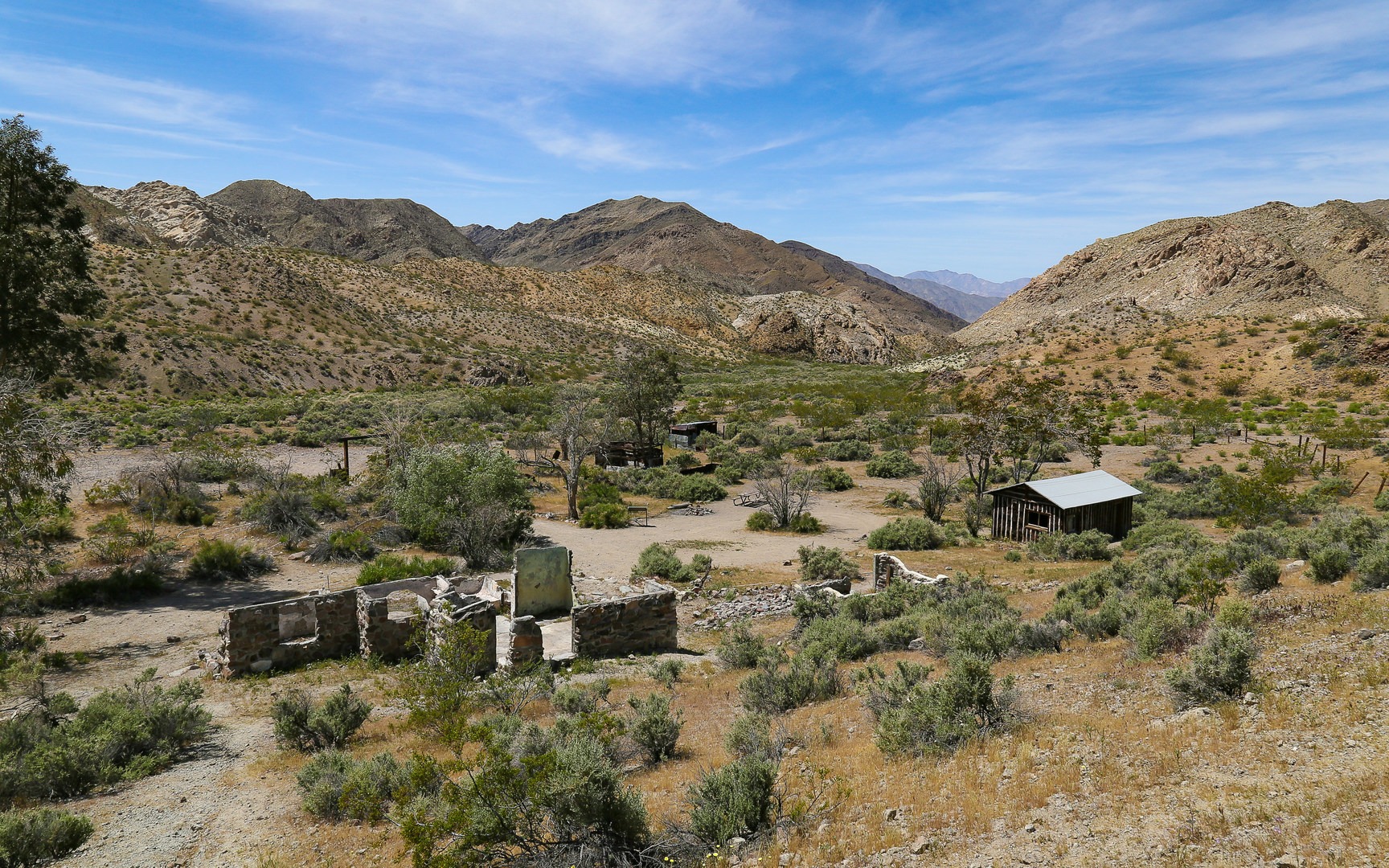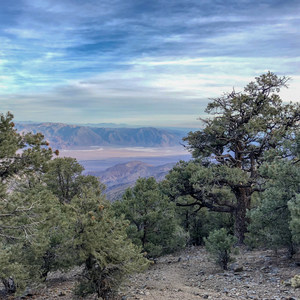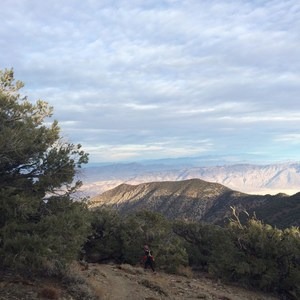You are here
Barker Ranch is made up of the ruins of an old ranch home surrounded by an oasis-like collection of trees and plants near the top of Goler Wash Road. The ranch is a relatively popular destination in this otherwise extremely isolated and distant corner of Death Valley National Park because of its proximity to the rugged Goler Wash four-wheel drive road and because it was where Charles Manson was arrested following a string of murders attributed to his circle of acquaintances in the Los Angeles area in the late 1960s.
The ranch was originally constructed in 1937 by Bluch and Helen Thomason, a couple from Los Angeles who were taking advantage of an 1872 mining act that allowed people to take over government-controlled land if they were actively mining it. The Thomasons, like others who came to the area around the same time, wanted to retire away from the city and ostensibly took up the hobby of small-time mining in order to legally occupy and live on the 5-acre ranch property in the isolated Panamint Mountains.
Following Bluch's death in 1950, the ranch only received sporadic use as a vacation property until James and Arlene Barker took over the mining claim in 1956. They lived on the property until 1968. That same year, Charles Manson worked out an agreement with Arlene Barker to live on the property; for the next year, the ranch was the main residence of the Manson family.
In December of 1969, law enforcement agents from several agencies, including Bureau of Land Management and the National Park Service, would raid the ranch and apprehend Charles Manson and others living there for the arson of road equipment in Death Valley. It was only after this arrest that Manson and others arrested at the ranch were tied to the Sharon Tate and Leno and Rosemary LaBianca murders, ultimately leading to Manson's life imprisonment.
The hike to the ranch follows a rough jeep road that heads up Goler Wash from the valley below. The road tends to see jeep and off-road vehicle traffic on weekends, but on weekdays you may have the entire hike to yourself.
With over 1,600 feet of climbing throughout the 5.25-mile route to the ranch, the trail heads into the interior of the Panamints, passing several abandoned cabins and mining camps, along with the equipment and water piping from canyon springs that once served them. The cabins, some of which sit on BLM and National Park Service land, are used as backcountry campsites. The sizeable Keystone Mine Camp, sitting just over 3 miles into the canyon, still has a collection of buildings and mining equipment. Although the dirt road is public, all of the buildings are technically privately owned.
The hike is straightforward until it passes the Sourdough Spring, a year-round spring about 4.75 miles up the canyon that was the source of water for several of the mining camps. Beyond that point there are a few forks and cell service is nonexistent, so hikers should prepare and know the correct route before taking on this hike.
The Barker Ranch House sits within a fenced area that also contains some trees, a couple of outbuildings, an informational sign and a dry reservoir that served as a swimming pool for the residents. The house itself caught fire in 2009 due to careless campers, so only the stone wall remains. There is also a picnic table. The ranch's shade provides a welcome respite from the canyon's harsh mid-day sun, and you can feel the lengths past residents went to to reach this degree of solitude. Fortunate hikers who visit following a wet season may find themselves amongst a diverse array of Death Valley's wildflowers that grow throughout areas of the canyon.
Following your visit to the ranch, retrace your route back to the mouth of Goler Wash. It's much easier on the way down.
In 1994, Barker Ranch and much of the area surrounding it in the Panamint Mountains was incorporated into Death Valley National Park.
A couple of springs lie along the trail and can provide water if you're carrying a filter. There is no cell phone service or any amenities along the hike. The nearest water can be found at the only shop in the ghost town of Ballarat, which is worth a stop in itself.
You can park at a turnout immediately before entering the mouth of Goler Wash, but the last 1.2 miles up to this point from the edge of the valley floor travels up loose stones. A four-wheel drive car works best for accessing the canyon, though a standard two-wheel drive can do it under most conditions if you take your time. Otherwise, it may be best to park at the point where Goler Wash/Coyote Canyon Road leaves the valley and begins to climb.
Logistics + Planning
Current Weather: Powered by Dark Sky



































Comments
Sign In and share them.